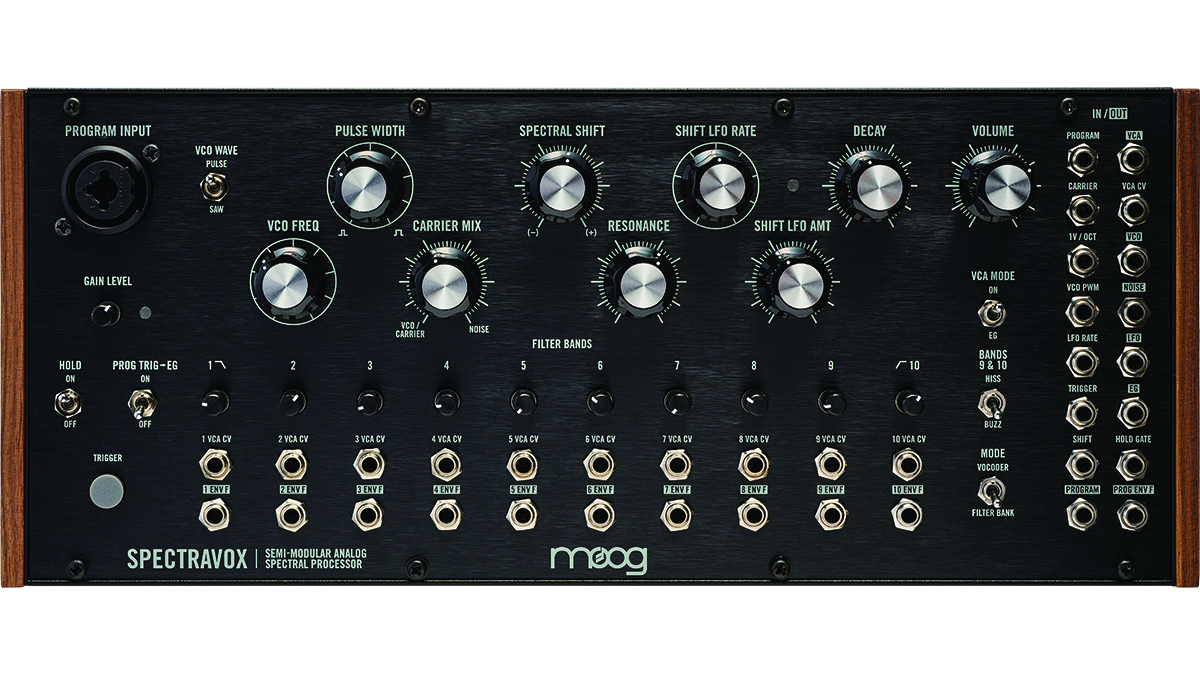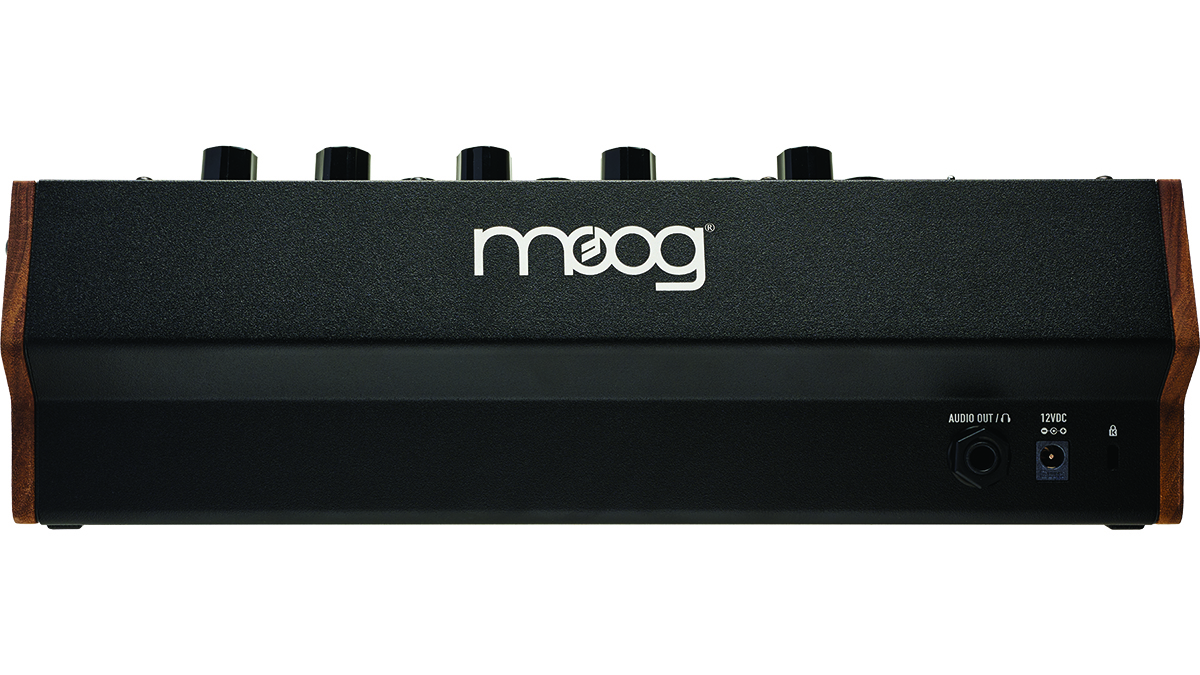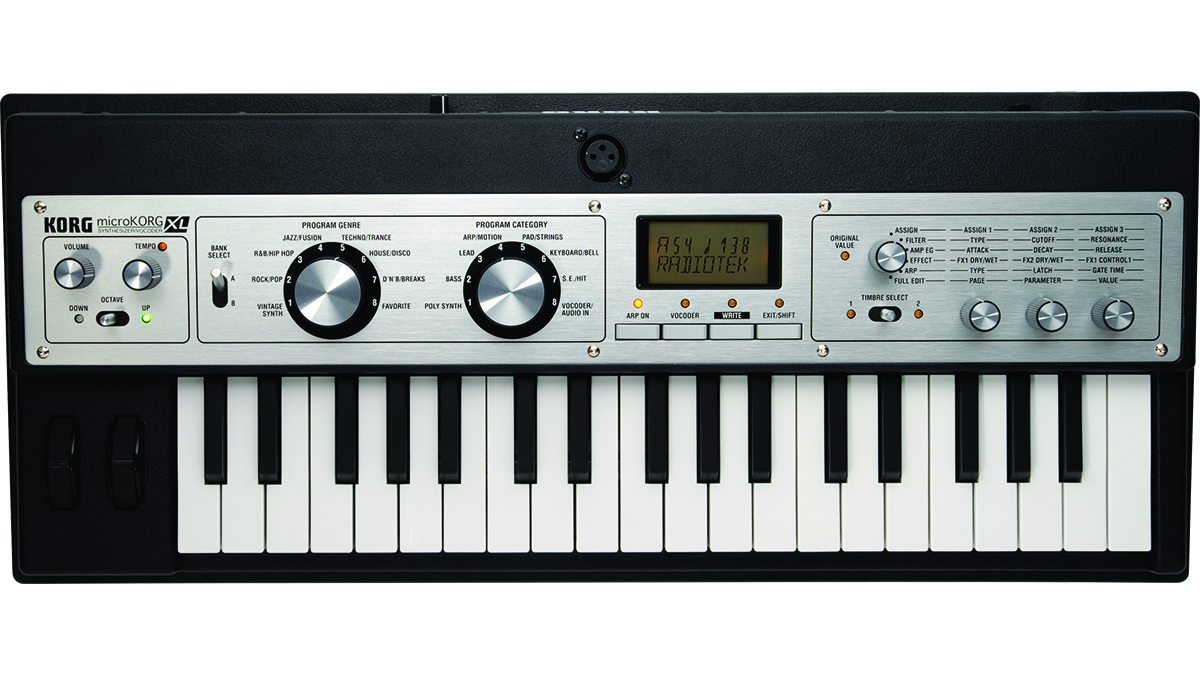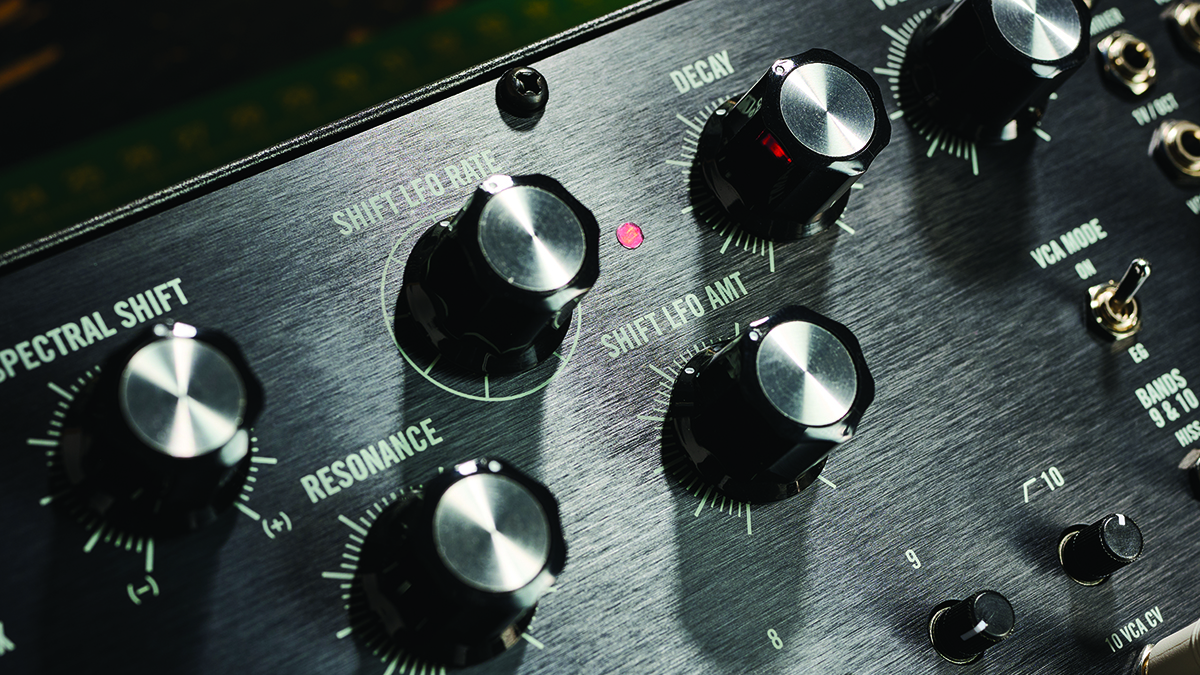MusicRadar Verdict
There are better vocoders out there, but Spectravox is at its best when integrated into a wider setup and pushed to its creative limits.
Pros
- +
Fun and creative design, capable of effects that reach well beyond standard vocoder tones.
- +
Lots of interesting modulation possibilities, from both the patchbay and individual filters.
- +
Pairs well with Moog’s other semi-modular synths.
Cons
- -
Not particularly great for clean or modern vocoder effects.
- -
Lack of MIDI is a needless hindrance.
- -
Less effective as a standalone instrument than Moog’s other semi-modulars.
MusicRadar's got your back
Moog Spectravox: What is it?
Moog’s latest rackable semi-modular first appeared back in 2019 as a DIY project built by attendees of the company’s Moogfest event. Previous Moogfests had seen synths including the DFAM and Subharmonicon make their public debut in the same way, before going on to re-emerge as fully-fledged, non-DIY products a few months later. At the time, it was fairly safe to assume that Spectravox would follow in their footsteps.
A lot has happened since 2019 though, including a global pandemic, disrupted supply chains and on a more specific level, Moog’s sale to InMusic and the significant downsizing of its US operation. When a mass market Spectravox failed to appear, it looked likely it would end-up as an oddball rarity among the wider history of Moog products.

But now Spectravox is back – in a slightly redesigned form – labelled a ‘semi-modular analog spectral processor’. We'll get to exactly what that means in a moment, but first, let’s address the elephant in the room. Spectravox is the first hardware Moog product released since the company was taken over by InMusic, and the first not to be assembled in the company’s North Carolina HQ.

Placing Spectravox next to its sibling products, there’s no obvious drop in quality. Significantly though, a small label on the rear of Spectravox notes that it’s ‘made in Taiwan’. The wood panelling on the ends of the unit is a slightly different tone to that of the DFAM and Subharmonicon we have to hand too, although not noticeably worse quality. Ultimately, it’s difficult to judge any difference in build in the short amount of time available for a review – the real test will be to see how each unit holds up to heavy use over a period of months or years. First impressions are positive though. Also, whereas previous instruments came packaged with a full A4-sized manual/patch sheet, Spectravox has just a fold-out quick start guide, although Moog does also throw in a poster and five cardboard overlays for the synth’s interface that act as basic patch templates.

Moog Spectravox: Performance and verdict
So what actually is Spectravox? It’s a combination of a filter bank, vocoder and simple monosynth. The main attraction here is the bank of 10 individual filters, which break the audio signal down into discrete frequency bands. That audio can be provided either by the internal oscillator and noise generator, or an external signal patched into the carrier input on the patchbay. Each band has its own level control, along with a CV input to modulate the band’s amplitude and a CV output that, in vocoder mode, transforms that frequency into a modulation envelope signal based on the Program (aka modulator) analysis.

• Korg microKorg XL
For a more modern, precise and clear vocoder sound, try Korg’s digital microKorg range.
• Behringer VC340
Behringer’s take on a classic Roland vocoder is a bargain, all-analogue instrument with both a keyboard and a MIDI input.
• Sherman Filterbank 2
A hardware cult classic, Sherman’s analogue filter bank remains much loved by producers.
All 10 filters share a single resonance control. What sets Spectravox apart from most other filter banks is its ability to shift the frequency range of all these filters simultaneously. This can be done manually, using the Spectral Shift control, or modulated via the internal triangle LFO or patchbay input.
The output of all filter bands is then summed and fed into a VCA, controlled by a basic envelope with a decay control. This envelope can be triggered using the patchbay, a front panel button or respond to the Program input.
Spectravox functions in two modes – Filterbank and Vocoder. In the former it works like a simple monosynth, albeit with a filter bank in the middle of its signal patch and the ability to swap the oscillator for an audio input. It’s worth noting that as Spectravox lacks a keyboard, sequencer or MIDI input; in order to ‘play’ it as a synthesizer, you’ll need something to patch into the 1v/Oct and Trigger inputs in the patchbay.
Switched to Vocoder mode, the Program input comes into play, acting as the modulator signal in a classic vocoder setup. Note that, likely as a result of its all-analogue design, Spectravox is quite noisy as vocoders go, and doesn’t exactly excel at clear, intelligible vocal lines. It is wonderfully characterful though, and by adjusting the relative levels of the frequency bands, as well engaging the resonance and spectral modulation, you can create some lovely odd synthesized tones.

In fact, we’d argue that Spectravox is best when not being treated like a traditional vocoder. The Program input can be fed a variety of sources as well as the human voice, and can do some fascinating things when fed distorted drum beats or resonant acid-like synths. As one would hope, it pairs particularly well with Moog’s own DFAM.
This is a theme for Spectravox as a whole – the more hardware you have to pair with it, the better it becomes. Of all Moog’s semi-modulars, this is the one that makes the least sense as a standalone purchase. Yes, it can function as a monosynth or vocoder – although the lack of MIDI feels like a needless hindrance on this front – but it comes to life when integrated into a wider rig and pushed into more unconventional use cases. The good crop of front panel CV offers a wide array of creative options. The ability to use each filter band as a CV envelope follower, routed to modulate other hardware, is a highlight and has the potential to keep you entertained long after the novelty of the ‘robot voice’ vocoder sound wears off.
MusicRadar verdict: There are better vocoders out there, but Spectravox is at its best when integrated into a wider setup and pushed to its creative limits.
Moog Spectravox: Hands-on demos
Moog Music
Sarah Belle Reid
loopop
Reverb
Moog Spectravox: Specifications
- KEY FEATURES: 10-band filter bank and vocoder, with internal oscillator (triangle/square wave), noise generator, plus resonance and spectral modulation with triangle wave LFO.
- I/O: 1⁄4” TRS headphone or 1⁄4” TS Instrument output, Combi XLR/TS input, patchbay: 19 inputs, 17 outputs.
- CONTACT: Moog
I'm the Managing Editor of Music Technology at MusicRadar and former Editor-in-Chief of Future Music, Computer Music and Electronic Musician. I've been messing around with music tech in various forms for over two decades. I've also spent the last 10 years forgetting how to play guitar. Find me in the chillout room at raves complaining that it's past my bedtime.
“Every note counts and fits perfectly”: Kirk Hammett names his best Metallica solo – and no, it’s not One or Master Of Puppets
Ranked: Bon Iver's albums, from Sable, Fable to For Emma, Forever Ago
“Its mission is simple: unleash the power of any amplifier or line-level source without compromise”: Two Notes promises a “watershed” in tube amp control with the Torpedo Reload II













